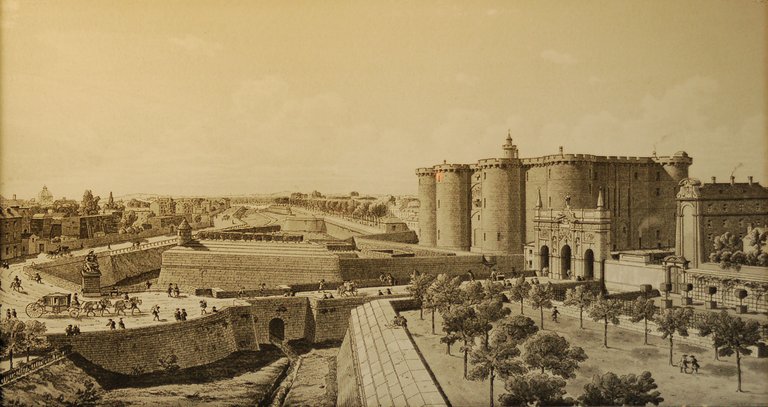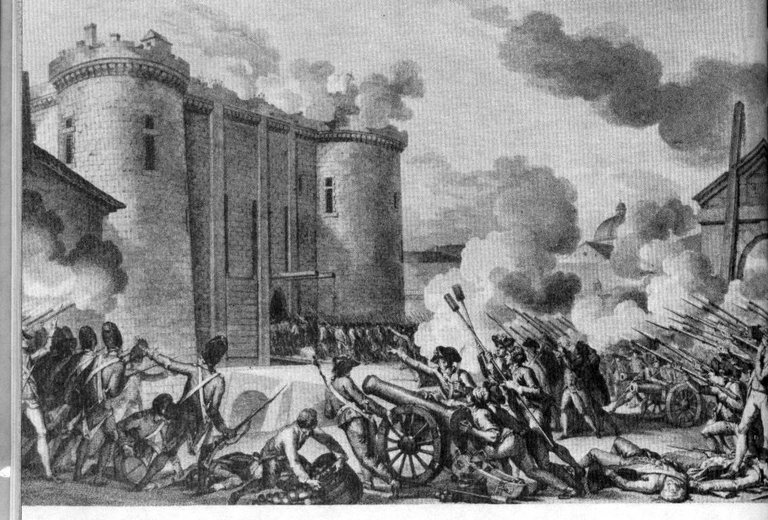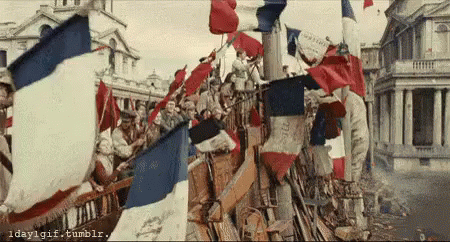
Image's Source - Fuente de la Imagen

Spanish Version Bellow
The first is some Universal History, an event that marked the fall of the Ancien Régime in Europe, and the beginning of the French Revolution. This is a fact that marked the history of several countries, on different continents, in addition to being an event of high symbolic value.
The Bastille was a prison in Paris that actually had very few prisoners at the time of its fall (1789). There were only 7 prisoners, according to most of the sources I have reviewed, but this fortification, built in medieval times (1370–1380), was a symbol of monarchical and absolutist power.

Image's Source - Fuente de la Imagen
Returning to the issue of the storming of the Bastille. If you are surprised that a prison, in which the high nobility could order people to be locked up with a simple word, had so few prisoners, everything can be explained by knowing that (the year before his assault by the revolutionaries) its closure had already been established.
A detail that always catches my attention is that there is an event during the days of the siege of the Bastille, in which the soldiers stationed in the capital were questioned by their superior if they would open fire on the citizens who were mutinying. And the general response was negative. Given this, the superior understood that the defense was impossible, and that the case was lost. Faced with an army that refused to kill people to maintain government power, there was no choice but to surrender to fate.

Image's Source - Fuente de la Imagen
Which leads me to mention the other celebration of the day that brought me to write this post. A rather endearing aunt has a birthday today. She is a relative on my paternal side, the wife of one of my uncles, who has always had a happy and smiling character. At times, she seemed like a 'big girl', but that character was something that I have liked for as long as I can remember.

Image's Source - Fuente de la Imagen
The contradiction between the bloody historical fact and the cheerful character of my relative is something that always makes me remember the date.
Anyway, I guess that's all I wanted to share. I say goodbye now, wishing you that you are well and that we can read again another time.

Versión en Inglés arriba
Lo primero es algo de la Historia Universal, un evento que marcó la caída del Antiguo Régimen en Europa, y el inicio de la Revolución Francesa. Este es un hecho que marcó la historia de varios países, en distintos continentes, además de que fue un hecho de alto valor simbólico.
La Bastilla era una prisión en París que realmente tenía muy pocos prisioneros al momento de su caída (1789). Eran apenas 7 los prisioneros, según la mayoría de las fuentes que he revisado, pero esta fortificación, construida en la época medieval (1370–1380), era un símbolo del poder monárquico y absolutista.

Image's Source - Fuente de la Imagen
Volviendo al asunto de la toma de la Bastilla, si te extraña que una prisión, en la que la alta nobleza podía mandar a encerrar gente con una simple palabra, tuviera tan pocos prisioneros, se explica todo al saber que (el año anterior a su asalto por los revolucionarios) ya se había establecido su cierre.
Un detalle que me llama la atención siempre, es que hay un evento durante los días de asedio a la Bastilla, en que los soldados destacados en la capital, fueron cuestionados por su superior si abrirían fuego sobre los ciudadanos que estaban amotinados. Y la respuesta generalizada fue negativa. Ante esto, el superior entendió que la defensa era imposible, y que la causa estaba perdida. Ante un ejército que se negó a matar a la gente para mantener el poder del gobierno, ya no había más camino que rendirse al destino.

Image's Source - Fuente de la Imagen
Lo que me lleva a mencionar la otra celebración del día que me trajo a redactar este post. Una tía, bastante entrañable, cumple años hoy. Es una pariente por parte paterna, esposa de uno de los tíos, que siempre ha tenido un carácter alegre y risueño. En ocasiones parecía una niña grande, pero ese carácter era algo que me ha agradado desde que tengo memoria.

Image's Source - Fuente de la Imagen
La contradicción entre el sangriento hecho histórico, y el carácter alegre de mi pariente, es algo que siempre me hace recordar la fecha.

This challenge is an initiative of @flaxz
The 4 points to join the #IAmAliveChallenge, includes using the hashtag #alive to post to We Are Alive Tribe and earn ALIVE tokens.
Este desafío es iniciativa de @flaxz
Los 4 puntos para unirte al #IAmAliveChallenge, incluyen el uso de la etiqueta #alive para publicar en We Are Alive Tribe y ganar tokens ALIVE.



 -
- 

